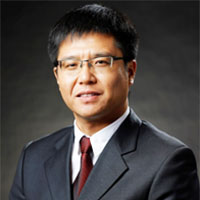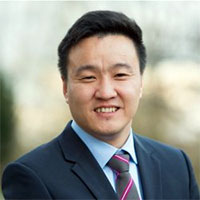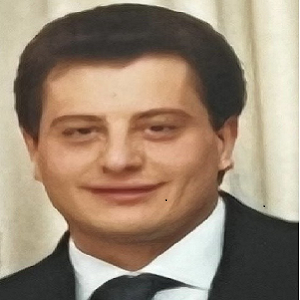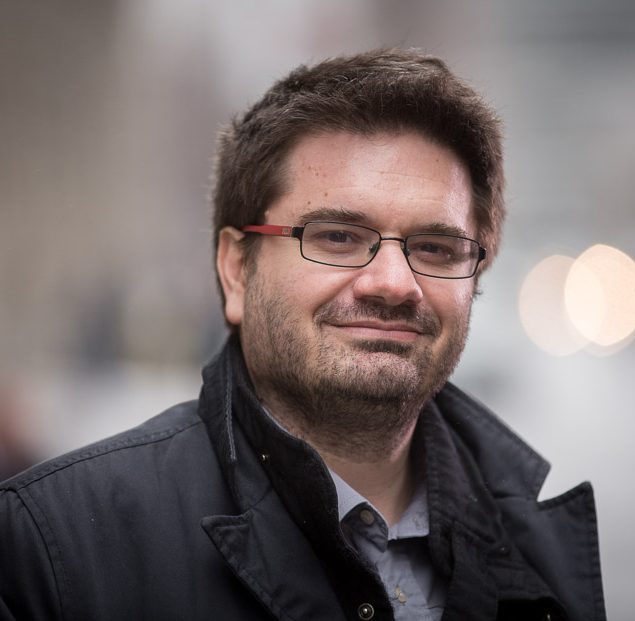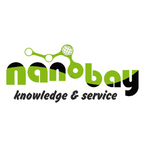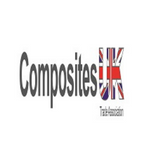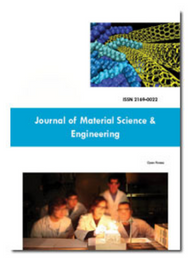Theme: Theme: Illuminating The Materials Research For A Better World
Materials Chemistry-2022
Material Chemistry-2022 Organizing Committee invites the participants across the globe to attend the "26th World congress on Material Chemistry" which is to be held December 01-02, 2022 Taipei, Taiwan. Organized around the theme “Illuminating The Materials Research For A Better World” Material Chemistry-2022 is compared of various sessions to offer comprehensive and share new ideas Experts, industry and students from the fields of materials chemistry, nanotechnology, chemistry and physics share their work experiences which provide prompt keynote presentations, oral presentations, poster competitions which exhibitions.
Conference Series Ltd organizes 1000+ Conferences every year across USA, Europe & Asia with support from 1000 more scientific Societies and Publishes 700+ Open Access Journals which contains over 50000 eminent personalities, reputed scientists as editorial board members.
Material Chemistry-2022 delivers infinite occasions for creating business contracts produce enhancements, cutting authority resolutions for educating and inspiring company’s business and partnership. The conference affords a unique platform for all the important industrial professionals, institutional investors, industrialists, and commercial development executives to have reserved One-to-One meetings with elite business agents which escalations the probabilities of presentation in this interacting creation.
1. Rational Molecular Design
Stanford scientists are designing and creating innovative molecular structures for the anticipated novel parcels, and understanding the structure- property connections to allow rational molecular design of accoutrements. Using molecular principles of chemistry, they've created complex macromolecular infrastructures similar as cyclic polymers and shape- patient graduation polymers, conjugated π- systems containing antiaromaticity, dynamic polymer networks, smart accoutrements seeing and responding to colorful stimulants, and organic/ inorganic perovskites for energy and electronic operations.
2. Nanomaterials
The hunt to explore the world at the nanoscale and uncover its secrets is a driving force before numerous new and fascinating discoveries within the last decade. Special parcels are associated with “small” (nanometer sized) accoutrements therefore parcels can be “tuned” through size control. For illustration, on the right we can see cadmium selenide (CdSe) amount blotches of different sizes, ranging from the lowest sizes on the left (green) to largest sizes on the right (red). It's important that new nanomaterials can be intelligently designed, synthesized and manipulated to achieve their full eventuality across a range of operations. Research in the School of Chemistry and Biosciences is concentrated on synthesizing, modifying, characterizing and testing bias composed of a wide range of nanomaterials( essence, essence oxides, double and ternary element semiconductors), chemical revision of shells so that they can be placed into a range of device infrastructures and design of new nanomaterials.
3. Biomedicine
Ongoing Exploration is developing functional degradable polymers and oligomers that serve as" molecular transporters" to deliver medicines and examinations into cells, tunable hydrogels that serve as artificial cell pulpits for cell transplantation and regenerative cell remedy, and Nano pillars as subcellular detectors to probe natural functions in living cells. Theoretical and computational sweats seek to understand the statistical mechanics of soft accoutrements, including proteins, DNA, and lipid membranes.
4. Sustainable Materials
Stanford druggists work at the van of new developments in the generation and study of new accoutrements made from renewable and sustainable coffers. Using mechanistic principles to produce catalysts for the conflation of complex macromolecular infrastructures, they develop sustainable polymers, synthetic energies, and bioactive motes. Using synthetic chemistry tools, they design cold-blooded accoutrements that couple the structural tunability of organic motes with the different electronic and optic parcels of extended inorganic solids. These sweats specifically target accoutrements with operations in clean energy, similar as sorbents for landing environmental adulterants, electrodes for rechargeable batteries, and absorbers for solar cells.
5. Intermetallic Compounds
This intermetallic emulsion is a redoubtable hedge to the penetration of disruptions present in the austenite leading to a large work hardening rate that's conducive to rigidity and high strength. Intermetallic composites achieved practical use before they were honored as chemical objects owing to their fairly easy availability the simplest intermetallic composites and blends grounded on these can be attained by direct response of the factors by melting, by sintering, or by reduction from oxides. Structurally ordered intermetallic phases have displayed advanced and advanced electrocatalytic exertion and stability than disordered blends in numerous responses similar as the oxygen reduction response( ORR) and small- patch( hydrogen, formic acid, or ethanol) oxidation responses.
6. Organic-inorganic interfaces
Mongrel organic- inorganic accoutrements and the rational design of their interfaces open up the access to a wide diapason of functionalities not attainable with traditional generalities of accoutrements wisdom. This innovative class of accoutrements has a major impact in numerous operation disciplines similar as optics, electronics, mechanics, energy storehouse and conversion, defensive coatings, catalysis, seeing and Nano drug. The parcels of these accoutrements don't only depend on the chemical structure, and the collective commerce between their Nano- scale structure blocks, but are also explosively told by the interfaces they partake.
7. Supercooled liquids/diffusion in thin films
Supercooling, also known as undercooling is the process of lowering the temperature of a liquid or a gas below its freezing point without it getting a solid. It achieves this in the absence of a seed demitasse or nexus around which a crystal clear structure can form. Isothermal crystallization of chilled liquid and glassy Fe thin flicks has been studied via molecular dynamics (MD) simulations with a numerous- body eventuality of the bedded snippet system (EAM). Chilled liquid and glassy Fe thin flicks are attained by cooling from the melts. Models at a given temperature are annealed for a long time in order to study crystallization process. Time dependence of colorful thermodynamic and structural amounts upon annealing is anatomized including implicit energy, radial distribution function( RDF), collaboration number distribution, bit of tittles of colorful crystalline orders etc.
8. Ion transport membranes
This chapter describes the elaboration and advances of ion transport membranes for gas separation operations, especially separation of oxygen from air. In cooperation with the US Department of Energy (DOE), Air Products and Chemicals, Inc. (Air Products) successfully developed a new class of mixed ion – electron conducting paraphernalia and membrane architecture. These new paraphernalia are appertained to as ion transport membranes ( ITM). Generically, ITMs correspond of modified perovskite and brownmillerite oxide solid electrolytes and give high oxygen anion and electron conduction generally at high temperatures driven by an oxygen implicit grade without the need for external power. The partial pressure rate across the ITM caste creates the driving force for oxygen separation.
9. Polymeric materials
The study of polymeric accoutrements in the field of enhanced oil painting recovery and water treatment technologies will be presented and estimated. We bandy the recent advances in the polymeric accoutrements for the delivery of nucleic acid rectifiers. We examine the use of common polymer infrastructures and punctuate the challenges that live for their development from bench side to clinic. We also give an overview of the most notable advancements made to circumvent similar challenges, including structural revision and stimulants- responsive approaches, for safe and effective nucleic acid delivery.
10. Semiconductor-based chemical sensors
It defines chemical detector as a device that transforms chemical information, ranging from the attention of a specific sample element to total composition analysis, into an analytically useful signal. The discovery of motes or chemical composites is a logical task to gain qualitative and quantitative time and spatially resolved information on specific chemical factors. Recent advances in the development of detectors grounded on the use of amount waterfall spotlights( QCLs) for the sensitive, picky discovery, quantification and monitoring of both small and large molecular gas species with resolved and undetermined spectroscopic features independently will be reported.
11. Organic non-linear optical materials
Advancements of spotlights and optic filaments contributed to optic dispatches and optic disks for practical use. Farther development of optic accoutrements is urgently needed. Nonlinear optic accoutrements efficiently parade nonlinear optic marvels, which are conversion of light wavelength, modification of light, and conversion of the refractive indicator depending on optic intensity. In addition to these inorganic accoutrements, organic nonlinear optic accoutrements have also been studied. This is because organic accoutrements show effective nonlinear optic parcels and rapid-fire responsiveness grounded on largely portable- electrons, thanks to delocalized electrons in organic accoutrements. Nonlinear optic accoutrements may be important for large- capacity dispatches, because farther operation of this material may give a device in an all optic system.
12. Spintronics
Spintronics is one of the arising fields for the coming- generation Nano electronic bias to reduce their power consumption and to increase their memory and processing capabilities. Similar bias uses the spin degree of freedom of electrons and/ or holes, which can also interact with their orbital moments. In these bias, the spin polarization is controlled either by glamorous layers used as spin- polarisers or analysers or via spin – route coupling. Spin swells can also be used to carry spin current. Spintronics is the most promising technology to develop indispensablemulti-functional, high- speed, low- energy electronic bias. Due to their unusual physical characteristics, arising two- dimensional( 2D) accoutrements give a new platform for exploring new spintronic bias.
13. Crystal Engineering
The crystal clear structure of a material determines a wide range of physical parcels similar as solubility, bioavailability and color. For illustration, the effectiveness of a medicine is dependent on the crystal clear form used. As motes can live in a variety of different crystal clear forms (e.g. polymorphs, mariners, co-crystals), a range of parcels is possible for a given emulsion. Exploration in crystal clear engineering focuses on understanding the molecular position processes that control the crystal clear growth of different chargers and how to use this knowledge to design and produce new accoutrements with desirable parcels. This involves a combination of experimental (crystallization, crystal clear structure determination, property measures) and computational studies (computation of intermolecular relations, ratiocination of crystal clear terrain goods, relations of motes with crystal clear shells).
14. Functional Materials
Our accoutrements experimenters in the University of Bradford are preparing a range of new accoutrements for a range of operations. These include Metal- Organic fabrics (MOFs) – a promising new class of material that could be used as gas storehouse, carbon prisoner, separation, and catalysis and medicine delivery. Biomimetic clusters Polynuclear cluster complexes are ubiquitous in nature and play crucial places in numerous active centers in different enzymes. We're interested in developing biomimetic complexes for catalytic water- splitting responses. Patch- grounded attractions we’re interested in conflation and glamorous studies of polynuclear complexes of paramagnetic essence ions. They frequently show intriguing glamorous parcels, and can bear as single- patch attractions (SMM) depending on the glamorous commerce between different essence ions.
Global Chemical and Material Market have been witnessing steady growth during the 2021-2027 periods. It is anticipated to grow at a CAGR of 8.10% throughout the period of assessment to reflect a market value of US$ 167.1 Bn by 2027 from a value of US$ 104.72 Bn in 2021. Green Chemical and Material Market report is a comprehensive analysis of the industry, market, and key players. The report has covered the market by demand and supply-side by segments. The Global Green Chemical and Material Market report also provides trends by market segments, technology, and investment with a competitive landscape.
Green chemical or bio-based chemical substances are chemical substances that are inexhaustible in nature and are delivered from bio-based feedstock. They are less dangerous to the climate than the oil-based formation of chemical substances. Green chemical compounds are shaped fundamentally utilizing crude materials, which utilizes more extraordinary normal assets, safeguarding the natural equilibrium. The fundamental crude materials utilized in delivering green chemical substances incorporate starch, sugar, creature fat, vegetable oils and bio-ethanol.
Expansion in the framework advancements everywhere because of urbanization is in full cycle. Huge scope assets openly and private areas are driving the interest for green synthetic compounds and materials needed in development reason. Governments are embraced enormous scope undertakings like the structure of roadways, street lines, and public framework projects.
The car area is probably going to be among the main application sections around here, inferable from its importance in the European economy. Vehicles represent around 12% of the absolute carbon dioxide discharges in Europe, which is probably going to be among the principal drivers for Europe to utilize green synthetics and materials in its clamouring car industry.
Conference Highlights
- Rational Molecular Design
- Nanomaterials
- Biomedicine
- Sustainable Materials
- Intermetallic Compounds
- Organic-inorganic interfaces
- Supercooled liquids/diffusion in thin films
- Ion transport membranes
- Polymeric materials
- Semiconductor-based chemical sensors
- Organic non-linear optical materials
- Spintronics
- Crystal Engineering
- Functional Materials
- Green and Sustainable Chemistry
To share your views and research, please click here to register for the Conference.
To Collaborate Scientific Professionals around the World
| Conference Date | December 01-02, 2022 | ||
| Sponsors & Exhibitors |
|
||
| Speaker Opportunity Closed | |||
| Poster Opportunity Closed | Click Here to View | ||
Useful Links
Special Issues
All accepted abstracts will be published in respective Our International Journals.
- Journal of Material Sciences & Engineering
- Journal of Nanomaterials & Molecular Nanotechnology
- Journal of Materials Science and Nanomaterials
Abstracts will be provided with Digital Object Identifier by





